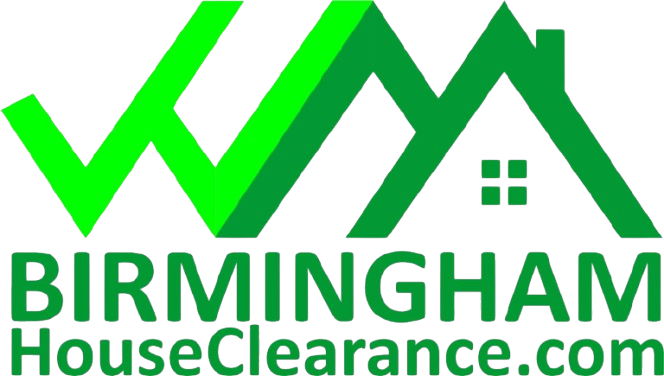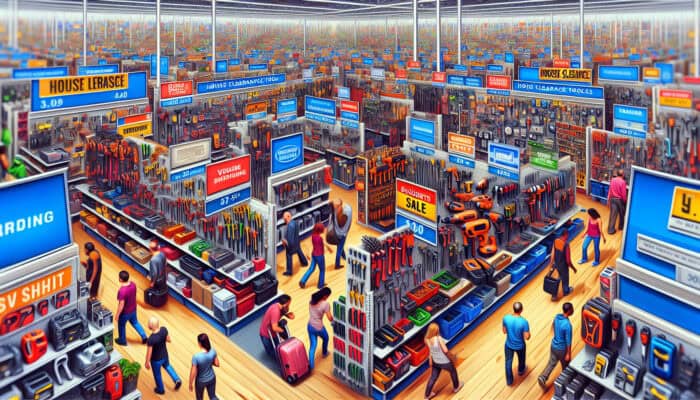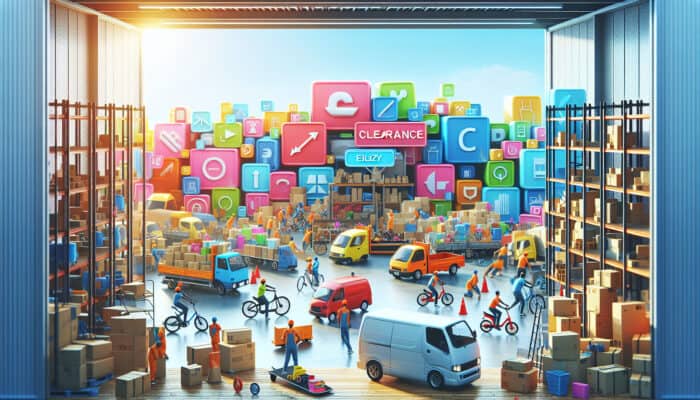Understanding Clearance Item Transport in the UK
What Are Clearance Items?

Efficient Transport Tips for Clearance Items: Clearance items are products offered at significantly reduced prices to clear excess inventory. These items can include a variety of goods, such as seasonal items, discontinued products, overstocked merchandise, and returned goods. Retailers aim to move these products quickly, often before the end of a season or product lifecycle, to maximise space and reduce holding costs. Common types of clearance items often seen in UK retail include:
- Seasonal decorations (e.g., Christmas or Halloween items)
- Discontinued electronics
- Clothing and accessories from out-of-season collections
- Home goods like furniture and kitchenware
- Toys and games post-holiday
- Sports equipment during the off-season
- Books and media are being phased out
- Cosmetics nearing expiry dates
Retailers frequently offer these items at lower prices to entice bargain hunters, but the approach to transporting these goods needs to be particularly strategic due to their lower margins.
How Does Transport Differ for Clearance Items?
Transporting clearance items necessitates distinct strategies compared to regular stock. Given their reduced value and urgency to sell, logistics must be adapted to ensure cost-effectiveness and speed. This often includes prioritising rapid movement over traditional routing methods. The transport of clearance items may involve smaller, more frequent shipments to clear out inventory quickly. Additionally, the choice of carriers may shift towards those offering flexible and economical options, as transport costs significantly impact the overall profit margin.
The urgency surrounding clearance items means retailers often have to adjust their supply chain processes, utilising more localised transport solutions to facilitate quicker delivery. This could mean a shift towards local carriers or leveraging third-party logistics providers who can respond quickly to changing demands.
Benefits of Efficient Transport for Clearance Items
Efficient transport of clearance items can yield numerous benefits for retailers. Firstly, it can significantly increase profit margins by reducing unnecessary storage costs and wastage. When clearance items are moved swiftly and effectively, retailers can clear shelf space for new products, ensuring a fresh inventory that attracts customers. Secondly, timely delivery enhances customer satisfaction, especially when clearance items are often sought after by budget-conscious consumers eager for deals.
The speed of delivery can also positively impact brand perception. Customers appreciate receiving their purchases quickly, which is particularly crucial for clearance items that are often time-sensitive. This can lead to repeat business, as satisfied customers are likely to return for more bargains. Efficient transport practices can also reduce the risk of damage, ensuring that products remain in sellable condition upon arrival, further contributing to profitability.
Key Considerations for Clearance Item Transport Logistics
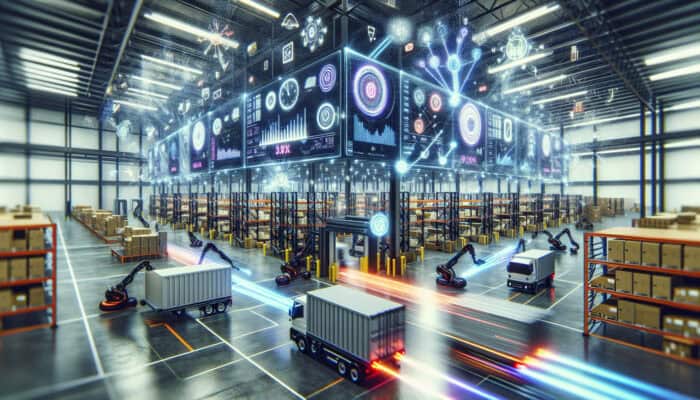
Logistics for clearance items present unique challenges that require careful consideration. Firstly, the rapid turnover of these items calls for agile logistics practices. Retailers must ensure that their transportation methods are capable of quick adaptation to changing demand while still maintaining cost efficiency. This often involves using dynamic routing systems that can respond to real-time data about inventory levels and customer orders.
Another key consideration is the handling and storage of clearance items. Since these items can vary widely in nature, from fragile electronics to bulky furniture, they might require specialised handling solutions. For instance, temperature-sensitive items such as cosmetics or food products necessitate specific storage conditions during transport. Additionally, retailers must consider the packaging of these items to minimise damage during transit, while ensuring compliance with safety regulations.
Finally, understanding the seasonal demand for clearance items is vital. Retailers need to analyse past sales data to predict peak clearance periods, enabling proactive logistics planning. This might involve securing transport contracts in advance to ensure availability during high-demand periods, thus avoiding delays that can hinder sales.
Impact of Clearance Item Transport on Retail Operations
Efficient transport of clearance items significantly influences retail operations by streamlining processes and improving inventory turnover rates. By optimising transport logistics, retailers can decrease holding costs associated with unsold clearance items. This not only frees up capital that can be reinvested into new stock but also enhances overall warehouse efficiency. Efficient transport ensures that inventory levels are in constant flux, which is critical in a retail environment where consumer preferences can shift rapidly.
Moreover, integrating effective transport strategies can simplify supply chain management. When clearance items are moved quickly, it reduces the complexity of inventory tracking, allowing retailers to maintain accurate stock levels and make informed purchasing decisions. This leads to better alignment between sales forecasts and inventory management.
Finally, the impact of transport efficiency extends beyond logistics—it’s essential for customer satisfaction and retention. A reliable supply chain that continuously delivers clearance items to consumers not only boosts sales but also fosters brand loyalty. Customers who can consistently find and receive clearance items they want quickly are more likely to become repeat buyers, creating a loyal customer base that benefits the retailer in the long run.
Expert Insights on Efficient Transport Tips for Clearance Items
What Insights Do Experts Offer on Clearance Item Transport?
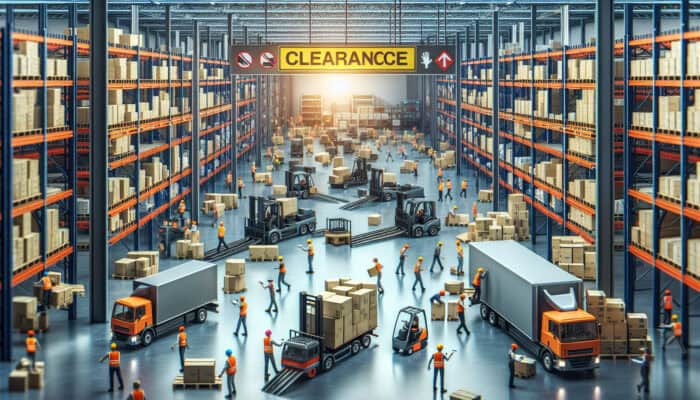
Experts in logistics and retail emphasise that a comprehensive understanding of the lifecycle of clearance items is essential for developing effective transportation strategies. The lifecycle typically includes stages such as sourcing, storage, marketing, and ultimately, transportation. Each stage presents opportunities to optimise logistics and enhance efficiency. For instance, a well-timed transport strategy can ensure clearance items are moved immediately after a sales push, capitalising on consumer interest.
Successful real-world examples underscore the importance of agility in transport. For example, a major UK retailer implemented a strategy where clearance items were bundled and shipped using a dedicated transport service that operated on a just-in-time basis. This not only reduced transport costs but also ensured that items were delivered promptly, enabling the retailer to clear inventory effectively while maintaining customer satisfaction.
Experts further emphasise the role of clear communication between logistics teams and sales departments. This collaboration allows for more effective transport planning, ensuring that clearance items are readily available as they become available in stores or online. Regular meetings and data sharing can help adjust transport strategies based on real-time sales trends, ensuring responsiveness to consumer demand.
How Can Technology Aid in Clearance Item Transport?
Technology plays a pivotal role in enhancing the transportation of clearance items, effectively addressing various logistical challenges. Real-time tracking systems are among the most significant technological advancements. They enable retailers to track the movement of clearance items throughout the supply chain, providing visibility that can lead to timely interventions in the event of issues.
Automation in logistics is another area where technology can make a substantial impact. Automated systems can optimise load planning and route selection, reducing manual errors and enabling quicker decision-making. For instance, using AI algorithms to analyse historical transport data can help predict the most efficient routes for clearance items, ensuring they reach customers as quickly as possible.
Additionally, inventory management software integrated with transport logistics can streamline operations. By tracking clearance item stock levels, retailers can ensure that transport requests are made only when necessary, thereby reducing unnecessary shipments and associated costs. This symbiotic relationship between inventory management and transport logistics can lead to a more efficient supply chain that is responsive to changing market conditions.
Furthermore, mobile applications and dashboards can enhance communication within logistics teams, providing instant updates on transport status and allowing for quicker adjustments to plans. This technological integration not only improves efficiency but also enhances customer satisfaction by reducing delays and ensuring timely deliveries.
What Are the Key Metrics for Measuring Transport Efficiency?
Measuring the efficiency of transport for clearance items involves several key metrics that provide insights into performance and areas for improvement. Delivery time is one of the most critical metrics, indicating how swiftly clearance items reach customers. Monitoring this metric helps retailers identify bottlenecks in the supply chain that may be causing delays in shipments.
Another essential metric is cost per unit, which evaluates the total transport cost divided by the number of items delivered. This figure is crucial for assessing the effectiveness of transport strategies, especially for clearance items, where margins are often thin. By analysing this metric, retailers can explore opportunities to reduce transport costs through better negotiation with carriers or by optimising load capacities.
The damage rate is also a vital metric to consider. A high damage rate can lead to increased costs and reduced customer satisfaction. Retailers need to monitor the frequency of clearance items being damaged during transport and implement measures to minimise these occurrences, such as improved packaging or better handling practices.
Feedback from customers regarding delivery performance can also serve as qualitative data to measure transport efficiency. Surveys or direct feedback can highlight areas that need improvement, ensuring that the transport process meets customer expectations. By consistently monitoring these key metrics, retailers can refine their transport operations to enhance efficiency and profitability.
What Strategies Can Improve Clearance Item Transport Efficiency?
Several strategies can significantly enhance the efficiency of transporting clearance items, resulting in cost savings and faster delivery times. One effective approach is consolidating shipments. By grouping multiple clearance items into a single delivery, retailers can reduce transport costs and streamline logistics, minimising the number of trips required and maximising load capacities.
Optimising routes is another critical strategy. Advanced routing software can analyse traffic patterns, road conditions, and delivery windows to determine the most efficient paths for transport. This not only speeds up delivery times but also reduces fuel consumption and transportation costs, contributing to more environmentally friendly practices.
Establishing strong relationships with local carriers can also enhance efficiency. Local transport providers often have intimate knowledge of the area, enabling quicker deliveries and better handling of clearance items. Retailers can negotiate favourable rates based on volume, ensuring cost-effective transport solutions that meet the urgency required for clearance items.
Ultimately, embracing flexible transportation solutions is crucial. As consumer demand fluctuates, retailers should be prepared to quickly adapt their logistics strategies. This could involve utilising a mix of transport modes—such as road, rail, or even air freight for high-value clearance items—allowing for responsiveness to changing conditions and ensuring that clearance items reach customers promptly.
Logistics Strategies for Clearance Items in the UK
What Are the Best Practices for Clearance Item Logistics?
Implementing best practices in clearance item logistics is essential for maximising efficiency and profitability. One effective practice is to conduct regular inventory audits. By understanding stock levels and identifying slow-moving clearance items, retailers can make informed decisions about transport strategies and timing for shipments, ensuring that items are moved before they become obsolete.
Another best practice is to utilise cross-docking methods. This involves unloading incoming shipments directly onto outbound transport vehicles, minimising storage time and speeding up the delivery process. This approach is particularly effective for clearance items, where rapid turnover is necessary to avoid holding costs.
Utilising data analytics to predict demand is also crucial. By analysing historical sales data, retailers can anticipate which clearance items are likely to sell quickly and adjust their logistics accordingly. This proactive approach enables better planning of transportation resources and reduces the risk of overstocking.
Ultimately, establishing collaborative relationships with logistics partners is crucial. Retailers should maintain open communication with their transportation providers to ensure alignment on goals, timelines, and expectations. This collaboration can lead to tailored solutions that enhance transport efficiency for clearance items, reducing costs and improving service levels.
How Can Warehousing Impact Clearance Item Transport?
Warehousing plays a crucial role in the transportation of clearance items, directly impacting the efficiency of logistics operations. A strategic warehousing approach is crucial for minimising lead times and ensuring that clearance items can be dispatched promptly. For instance, utilising regional distribution centres can place clearance stocks closer to key markets, minimising transport distances and enabling faster deliveries.
The layout and design of warehouses also impact the handling of clearance items. Implementing an optimal warehouse layout that prioritises high-velocity clearance items can facilitate quicker picking and packing processes. This not only speeds up the dispatch of clearance items but also reduces the likelihood of errors during order fulfilment.
Moreover, the utilisation of technology in warehousing—such as automated picking systems—can further enhance efficiency. By streamlining the picking process for clearance items, retailers can ensure that orders are fulfilled more quickly, allowing for timely transport to customers.
Additionally, an effective warehousing strategy should focus on inventory management practices. Accurate tracking of clearance item stock levels can help retailers identify when to replenish items or adjust their transport strategies based on demand. This proactive management approach contributes to a more responsive supply chain, ensuring that clearance items are readily available for dispatch.
Role of Last-Mile Delivery in Clearance Item Transport
Last-mile delivery is a crucial component of the transportation process for clearance items, significantly impacting customer satisfaction and overall logistics efficiency. The final leg of transport is not only about getting products to the customer but also about ensuring that the delivery meets expectations. For clearance items, which are often time-sensitive, effective last-mile solutions can make the difference between a satisfied customer and a lost sale.
One key strategy for enhancing last-mile delivery is to offer flexible delivery options. Providing customers with choices—such as same-day delivery, evening delivery, or click-and-collect services—can significantly improve their experience. This flexibility allows customers to receive clearance items at their convenience, fostering positive perceptions of the retailer.
Utilising local delivery partners can also enhance last-mile efficiency. Local carriers often have more intimate knowledge of the area, leading to quicker and more reliable deliveries. This is particularly important for clearance items, where customers may be more impatient due to the urgency of snagging a bargain.
Technology also plays an integral role in optimising last-mile delivery. Implementing tracking systems enables customers to monitor their deliveries in real-time, which can enhance transparency and reduce surrounding delivery times. Additionally, data analytics can help retailers predict peak delivery times and adjust their logistics accordingly, ensuring that clearance items are delivered as promised.
Finally, training delivery personnel to handle clearance items with care is crucial. Given that many clearance items may be fragile or sensitive, ensuring that delivery staff are mindful of the handling requirements can reduce damage rates and enhance customer satisfaction.
Cost-Effective Transport Solutions for Clearance Items
How Can Businesses Reduce Transport Costs for Clearance Items?
Reducing transport costs for clearance items requires a multifaceted approach that incorporates negotiation, optimisation, and strategic planning. One effective strategy is to negotiate better rates with carriers. Retailers can leverage their shipping volume to establish long-term relationships with logistics providers, securing favourable pricing for the transport of clearance items.
Optimising load capacities is another significant aspect of reducing transportation costs. By ensuring that vehicles are fully loaded before departing, retailers can maximise the efficiency of each trip. This might involve coordinating shipments to consolidate loads from multiple sources, thus minimising the cost per unit transported.
Utilising technology for route optimisation can also lead to substantial cost savings. Advanced routing software can analyse various factors, such as fuel prices and traffic patterns, to determine the most cost-effective routes for transport. This not only saves money but also enhances delivery efficiency, ensuring that clearance items reach customers promptly.
Another cost-reduction strategy is to consider alternative transport modes depending on the urgency and nature of the clearance items. For example, using rail transport for bulk clearance items can be more economical than road transport for long distances. Retailers should evaluate the trade-offs between cost, speed, and reliability when choosing transport modes for clearance items.
Finally, implementing a robust feedback system can help identify inefficiencies in the transport process. Regularly reviewing transport costs and performance metrics can help identify areas for improvement, enabling businesses to make informed decisions that lead to reduced transportation expenses.
What Are the Advantages of Bulk Transport for Clearance Items?
Bulk transport serves as a highly advantageous method for moving clearance items, particularly when dealing with large quantities of similar products. One of the primary benefits of bulk transport is the reduction in cost per unit. By transporting larger quantities simultaneously, retailers can leverage economies of scale, thereby significantly reducing transportation costs.
Additionally, bulk transport can expedite the movement of clearance items. Rather than making multiple small shipments, consolidating items into a single bulk delivery can streamline logistics and reduce the time required to clear inventory. This efficiency is particularly beneficial for clearance items, which often require prompt movement to prevent losses.
Another advantage is the increased reliability of bulk transport. With fewer shipments to manage, retailers can simplify their logistics processes and reduce the risk of delays or errors. This reliability is especially important for clearance items, as maintaining product availability is crucial for capturing sales opportunities.
Moreover, bulk transport can also lead to a reduced environmental footprint. By maximising load capacities and minimising the number of trips taken, retailers contribute to lower fuel consumption and emissions. This is becoming increasingly important in today’s market, where sustainability is a key concern for consumers.
Lastly, bulk transport enables more effective inventory management. With larger shipments, retailers can replenish stock levels more effectively, ensuring that clearance items are available when demand arises. This proactive approach can enhance customer satisfaction and drive sales for clearance items.
Utilising Different Transport Modes for Clearance Items
When transporting clearance items, selecting the appropriate transport mode is crucial for balancing cost, speed, and reliability. Each transport mode has its unique advantages and disadvantages that retailers must consider based on the nature of their clearance items and service requirements.
Road transport is the most common mode for delivering clearance items within the UK. Its advantages include flexibility and speed, allowing for direct deliveries to customers’ doorsteps. However, traffic congestion and weather conditions can impact delivery times, potentially leading to delays.
Rail transport offers a cost-effective solution for bulk shipments, especially over long distances. It is generally more environmentally friendly than road transport, as it consumes less fuel per unit of cargo. However, rail transport may lack the flexibility of road transport, requiring additional coordination for last-mile delivery to customers.
Sea freight is an ideal option for transporting large quantities of clearance items internationally. It is cost-effective for long distances, especially for heavier items. However, the drawback is longer transit times compared to road and air transport, which might not align with the urgent nature of clearance sales.
Air freight, while the fastest transport mode, is often more expensive and better suited for high-value clearance items or when quick delivery is paramount. Retailers must weigh the benefits of speed against the increased costs when opting for air freight.
Ultimately, the choice of transport mode should be based on a comprehensive analysis of cost, urgency, and the specific requirements of the clearance item inventory. By strategically selecting the most effective mode, retailers can enhance their transportation efficiency and meet customer demands more effectively.
Regulatory Considerations for Clearance Item Transport in the UK
What Regulations Affect Clearance Item Transport?
Transporting clearance items in the UK is subject to various regulations designed to ensure safety and compliance. Key regulations that affect the transport of these items include:
- Packaging standards to prevent damage during transit
- Labelling requirements for hazardous materials
- Weight and dimension restrictions for transport vehicles
- Compliance with vehicle safety and maintenance regulations
- Adherence to environmental regulations regarding emissions
- Driver certification and training standards
- Customs regulations for international shipments
- Data protection regulations concerning customer information during deliveries
Understanding and adhering to these regulations is crucial for retailers to avoid penalties and ensure a seamless transportation process. Non-compliance can result in significant delays in shipments and potentially lead to fines, negatively impacting profitability and customer satisfaction.
Regulatory changes can also affect the logistics of transporting clearance items. For instance, new packaging requirements or changes in emissions standards may necessitate adjustments in transport methods or practices. Retailers must stay informed about regulatory developments and be proactive in adapting their operations accordingly.
How Do Environmental Regulations Impact Clearance Item Transport?
Environmental regulations play a significant role in shaping transport practices for clearance items. The UK government has implemented various policies aimed at reducing emissions and promoting sustainable transport solutions. This influences how retailers approach the transport of clearance items, as they must consider eco-friendly methods to comply with regulations.
One of the most prominent impacts is the shift towards using low-emission vehicles for the transport of clearance items. Retailers must assess their fleet and consider investing in greener alternatives, such as electric or hybrid vehicles. This transition not only ensures compliance with environmental regulations but also enhances brand image among environmentally conscious consumers.
Additionally, transportation efficiency measures, such as optimising delivery routes and consolidating shipments, can reduce the carbon footprint associated with transporting clearance items. By minimising the number of trips required and utilising fuel-efficient methods, retailers can align their logistics operations with environmental regulations while also achieving cost savings.
Moreover, retailers may face stricter scrutiny regarding the packaging materials used for clearance items. Regulations often mandate the use of recyclable or biodegradable packaging, which can impact costs and operational practices. Retailers must evaluate their packaging strategies to ensure they meet environmental standards while still protecting clearance items during transport.
Overall, navigating environmental regulations requires retailers to adopt a proactive approach to their transport logistics—forging a path towards sustainability while maintaining efficiency in the movement of clearance items.
Compliance Strategies for Clearance Item Transport
Compliance strategies for transporting clearance items encompass a range of practices designed to adhere to regulatory requirements while maintaining operational efficiency. One crucial strategy is to establish a comprehensive compliance checklist that addresses all relevant regulations. This checklist should cover aspects such as packaging standards, labelling requirements, and vehicle safety regulations.
Regular audits and assessments of transport operations can help ensure compliance with applicable regulations. Retailers should conduct these audits to identify potential gaps in their processes and implement corrective actions. By fostering a culture of compliance, businesses can mitigate the risk of penalties and disruptions in their transport operations.
Training employees involved in the transport of clearance items is also vital. Providing training on regulatory requirements and best practices in compliance can significantly reduce the likelihood of non-compliance incidents. This training should be ongoing, continually adapting to new regulations and evolving industry standards.
Furthermore, leveraging technology to monitor compliance can streamline operations and enhance efficiency. Implementing software solutions that track compliance metrics, document procedures, and manage records can enhance transparency and accountability within the supply chain.
Engaging with legal experts or compliance consultants can also be beneficial. These professionals can provide valuable insights into regulatory changes and offer guidance on necessary adjustments to transportation practices, ensuring that retailers remain compliant in the ever-evolving regulatory landscape.
Trusted Strategies for Efficient Transport: Tips for Clearance Items
What Are the Most Trusted Transport Strategies for Clearance Items?
Effective transport strategies for clearance items revolve around reliability, flexibility, and cost-effectiveness. One of the most trusted strategies is to maintain relationships with reliable transportation providers. Retailers should establish partnerships with carriers known for their timely deliveries and expertise in handling clearance items with care. This reliability is crucial, especially for time-sensitive clearance stock.
Implementing a flexible logistics approach is also vital. Retailers should design transport strategies that can adapt to fluctuations in demand, ensuring that clearance items are dispatched swiftly as consumer interest peaks. This flexibility can involve utilising a mix of transport modes or adjusting delivery schedules based on real-time sales data.
Another trusted strategy is embracing technology to enhance efficiency. Employing transport management systems (TMS) can streamline logistics processes, enabling retailers to monitor shipments, track performance, and optimise routes effectively. This technology enables data-driven decision-making, a crucial step in enhancing transportation efficiency.
Regularly reviewing and analysing transport performance metrics is crucial for identifying areas for improvement. Retailers should track key metrics, such as delivery times and damage rates, to inform adjustments to transport strategies. This continuous improvement mindset ensures that retailers remain competitive in the clearance market.
Lastly, fostering open communication between departments—such as sales, logistics, and customer service—can enhance transport strategies. Collaborative efforts ensure that logistics are aligned with sales forecasts, improving the overall efficiency of transporting clearance items.
How Can Partnerships Enhance the Transportation of Clearance Items?
Forming strategic partnerships can significantly enhance the transport of clearance items, providing retailers with access to resources, expertise, and improved logistics solutions. Engaging with logistics providers who specialise in clearance item transport can lead to better rates and more efficient services. These providers often have established networks and systems in place that can streamline the movement of clearance stock.
Partnerships with local carriers can also be advantageous, particularly for last-mile delivery. Local providers often possess superior knowledge of regional logistics, enabling quicker and more reliable delivery of clearance items to customers. This partnership can enhance customer satisfaction and contribute to repeat business.
Collaborating with technology firms can further optimise clearance item transport. These partnerships can enable retailers to leverage advanced analytics, automation, and real-time tracking solutions, improving overall transport efficiency. By integrating cutting-edge technologies into logistics operations, retailers can gain a competitive edge in the clearance market.
Additionally, engaging with suppliers can foster better collaboration throughout the supply chain. By understanding suppliers’ inventory levels and clearance timelines, retailers can synchronise transport efforts, ensuring that clearance items are dispatched promptly. This collaboration can lead to improved inventory turnover and reduced holding costs.
Ultimately, forming partnerships with industry associations can offer retailers valuable resources and best practices. These organisations often offer training, workshops, and networking opportunities that can enhance a retailer’s logistics capabilities, ensuring they remain informed about the latest trends and strategies in clearance item transport.
What Role Does Data Analysis Play in Clearance Item Transport?
Data analysis plays a pivotal role in optimising the transport of clearance items by providing insights that inform logistics decisions. By collecting and analysing data from various sources, retailers can gain a comprehensive understanding of their transport operations, identifying trends and patterns that can drive improvements in efficiency.
One key area where data analysis proves valuable is in demand forecasting. By examining historical sales data and market trends, retailers can predict which clearance items are likely to sell quickly and plan their transport strategies accordingly. This proactive approach ensures that clearance items are moved promptly, aligning logistics with consumer demand.
Data analysis also aids in route optimisation. By analysing traffic patterns, delivery times, and fuel consumption, retailers can identify the most efficient routes for transporting clearance items. This not only reduces transportation costs but also enhances delivery speed, meeting customer expectations for timely service.
Furthermore, monitoring performance metrics through data analysis can highlight areas for improvement in transport efficiency. Retailers can track key metrics, including on-time delivery rates, damage rates, and transportation costs, enabling them to make informed decisions that enhance their logistics operations.
Finally, leveraging data analytics to manage inventory levels can lead to more effective transport planning. By understanding stock levels and turnover rates for clearance items, retailers can better coordinate transport schedules, ensuring that products are delivered when needed and reducing excess inventory costs.
Case Studies of Successful Clearance Item Transport in the UK
What Can We Learn from Successful Transport Case Studies?
Successful case studies in clearance item transport offer valuable insights into effective logistics strategies and practices. One notable example is a leading UK fashion retailer that implemented a rapid response logistics system for its clearance items. By analysing sales data daily, the retailer adjusted its transport schedules in real-time based on demand fluctuations. This agile approach enabled them to clear seasonal items swiftly, reducing holding costs and increasing overall sales.
Another impactful case study involves a major electronics retailer that adopted a tiered pricing strategy for clearance items. By segmenting products based on their sales velocity and adjusting transport methods accordingly, they improved the efficiency of their logistics. This led to faster turnover of clearance stock and maximised profit margins.
Additionally, a well-known supermarket chain utilised cross-docking techniques for clearance items. They streamlined their transport processes by directly moving products from receiving docks to outbound trucks, minimising storage time and optimising delivery schedules. This practice ensured that clearance items were quickly dispatched to stores, enhancing customer availability and satisfaction.
These examples highlight the importance of data-driven decision-making and agile logistics when transporting clearance items. Retailers who adapt their transport strategies based on real-time insights and market conditions can achieve significant operational efficiencies and better align their logistics with consumer demand.
How Do Different Industries Approach Clearance Item Transport?
Different industries face unique challenges and implement varied strategies for transporting clearance items. In the fashion industry, for instance, retailers frequently face rapid seasonal fluctuations and must clear out their inventory quickly. As a response, they may engage in flash sales and utilise rapid transport methods to ensure that clearance items are sold before they become obsolete.
In the electronics industry, the emphasis might be on ensuring that clearance items are handled with care. Retailers often utilise specialised packaging and employ strict quality control measures during transport to prevent damage to high-value items. They may also choose to offer extended warranties on clearance products to alleviate consumer concerns.
The grocery sector, on the other hand, focuses heavily on perishables. Clearance items often include products nearing their expiration date, necessitating swift transportation solutions. Retailers may implement temperature-controlled logistics to maintain product integrity and ensure that clearance items remain fresh until they reach consumers.
In the home goods sector, bulky items such as furniture may be discounted as clearance products. Retailers often negotiate with logistics partners who specialise in transporting large items, ensuring safe deliveries that meet customer expectations. This may involve assembling teams of professional handlers to manage the delivery process effectively.
Overall, understanding the specific challenges of each industry allows retailers to tailor their transport strategies for clearance items. By adopting industry-specific practices, businesses can enhance their logistics operations and improve overall efficiency.
What Are the Common Pitfalls to Avoid in Clearance Item Transport?
Several common pitfalls can hinder the effective transport of clearance items, and retailers should be mindful of them to enhance their logistics operations. One major pitfall is underestimating the urgency associated with clearance items. Retailers who fail to prioritise rapid movement risk holding onto inventory longer than necessary, leading to increased storage costs and potential losses.
Another common mistake is inadequate communication within the logistics team. A lack of coordination between departments can lead to delays and confusion regarding transportation schedules. Retailers should ensure that all team members are aligned and informed about transport plans to minimise disruptions.
Additionally, failing to consider the specific handling requirements of clearance items can lead to damage during transport. Retailers should invest in proper packaging and handling protocols to protect vulnerable items, especially electronics and fragile goods.
Moreover, neglecting to monitor transport performance metrics can hinder continuous improvement. Retailers must track key metrics, such as delivery times and damage rates, to identify areas for improvement. Regular analysis can provide insights that drive efficiencies and ensure that transport operations meet customer expectations.
Lastly, overlooking the role of technology can limit transport efficiency. Retailers who do not leverage transport management systems or real-time tracking may struggle to optimise their logistics. Embracing technology can enhance visibility and responsiveness in the transport process, leading to better outcomes for clearance items.
Innovations in Clearance Item Transport in the UK
What Innovations Are Transforming Clearance Item Transport?
Innovations in technology are revolutionising the transport of clearance items, offering new solutions for efficiency and effectiveness. One of the most notable developments is the use of drone delivery services. While still in the early stages of widespread implementation, drones present an opportunity for rapid delivery of clearance items, particularly in urban areas. Their ability to bypass traffic congestion can result in faster transportation times and improved customer satisfaction.
Artificial intelligence (AI) is also playing a significant role in optimising logistics. AI-driven algorithms can analyse vast amounts of data to identify patterns in consumer behaviour, demand forecasts, and transport efficiency. This predictive capability allows retailers to adjust their logistics strategies dynamically, ensuring that clearance items are moved in alignment with real-time consumer demand.
Moreover, the advancement of the Internet of Things (IoT) technology enables real-time tracking and monitoring of clearance items during transport. Retailers can gain insights into the condition and location of their products, allowing for quicker interventions if issues arise. This transparency enhances trust between retailers and customers, particularly with clearance items that may have specific handling requirements.
Additionally, blockchain technology is emerging as a transformative force in logistics. It facilitates greater transparency and traceability in the supply chain, ensuring that retailers can verify the authenticity and condition of clearance items throughout the transportation process. This innovation can build consumer confidence, especially for high-value clearance goods.
Ultimately, these innovations are not just enhancing transport efficiency; they are reshaping the entire landscape of clearance item logistics. Retailers who adopt these technologies can gain a competitive edge in the market by enhancing operational efficiency and customer experiences.
How Can Automation Improve Clearance Item Transport?
Automation is a game-changer for enhancing the transport of clearance items, streamlining operations, and reducing errors. One area where automation proves beneficial is in warehouse management. Automated picking systems can expedite the retrieval of clearance items, ensuring that orders are fulfilled quickly and accurately. This speed is crucial for clearance items, where timely dispatch can have a direct impact on sales.
In transport logistics, automated route optimisation software can identify the most efficient pathways for delivery. By analysing traffic data, weather conditions, and delivery windows, these systems can adjust routes in real-time, leading to faster transport of clearance items and lower fuel costs.
Moreover, automation can reduce the administrative burden associated with logistics. By digitising paperwork and automating documentation processes, retailers can ensure accuracy and minimise delays during transport. This efficiency is especially crucial for clearance items, as time-sensitive stock requires meticulous handling.
Additionally, automated tracking systems provide retailers and customers with real-time updates on the status of deliveries. This transparency can enhance customer satisfaction, as consumers appreciate being informed about the whereabouts of their clearance items.
Implementing automated systems not only improves efficiency but also reduces the potential for human error in transport processes. This reliability is essential for maintaining customer trust, particularly when dealing with clearance items that are often sought after for their unique pricing and urgency.
What Are the Future Trends in Clearance Item Transport?
The future of clearance item transport is poised for exciting developments driven by technological advancements and evolving consumer expectations. A notable trend is the growing emphasis on sustainability. Retailers are expected to adopt greener transport practices, utilising electric vehicles and alternative fuels to minimise environmental impact. This shift aligns with consumer preferences for eco-friendly products and practices.
Additionally, the rise of e-commerce continues to shape the logistics landscape. As more consumers turn to online shopping for clearance items, retailers will need to enhance their logistics capabilities to meet the demand for quick and efficient deliveries. This may involve investing in advanced fulfilment centres strategically located to optimise last-mile delivery.
Real-time data analytics will play a pivotal role in shaping future transport strategies. The ability to analyse consumer behaviour and market trends will allow retailers to anticipate demand for clearance items better and adjust their logistics operations accordingly. This responsiveness can lead to improved inventory turnover and reduced holding costs.
Moreover, the integration of AI and machine learning will further enhance transport efficiency. These technologies can enable predictive analytics that help retailers optimise their logistics based on historical data, improving decision-making and resource allocation.
Finally, as technology advances, retailers may explore innovative transport solutions such as autonomous vehicles and drone deliveries, which could revolutionise the way clearance items are transported. Embracing these trends will be essential for retailers to remain competitive in a rapidly evolving market.
How Are Regulatory Changes Affecting Clearance Item Transport?
Regulatory changes are continuously shaping the transport landscape for clearance items, necessitating adaptability from retailers. Recent developments in environmental regulations, such as the UK’s commitment to achieving net-zero emissions by 2050, have led to stricter requirements for transport emissions. Retailers must evaluate their logistics operations to ensure compliance, which may involve investing in low-emission vehicles and adopting more environmentally friendly practices.
Additionally, updates to packaging regulations are influencing how clearance items are transported. Retailers must stay informed about new packaging standards that mandate the use of recyclable or biodegradable materials. These changes may necessitate adjustments to packaging practices, which could impact costs and operational efficiency.
Moreover, regulations surrounding data protection and consumer privacy are increasingly relevant in the logistics sector. As retailers collect more customer data for shipping clearance items, they must ensure compliance with regulations such as the General Data Protection Regulation (GDPR). This compliance is critical for maintaining consumer trust and avoiding potential fines.
Furthermore, changes in customs regulations can impact the transportation and clearance of items, especially for international shipments. Retailers must navigate evolving trade policies and tariffs, ensuring that their logistics processes remain compliant and efficient.
Overall, retailers need to closely monitor regulatory changes and develop proactive strategies to adapt their transportation practices. By staying ahead of these changes, businesses can minimise disruptions and maintain compliance in their logistics operations.
What Role Does Data Analytics Play in Clearance Item Transport?
Data analytics is integral to optimising clearance item transport, enabling retailers to make informed decisions that enhance efficiency and effectiveness. By leveraging analytics, retailers can gain insights into transport performance, customer preferences, and market trends. This information enables the development of tailored logistics strategies that align with consumer demand for clearance items.
One of the primary uses of data analytics is in demand forecasting. By analysing historical sales data, retailers can predict which clearance items are likely to sell quickly and adjust transport schedules accordingly. This proactive approach ensures that inventory is clear before it becomes obsolete, minimising losses and maximising profitability.
Additionally, data analytics helps optimise route planning. By assessing traffic patterns and delivery performance, retailers can identify the most efficient routes for transporting clearance items. This not only enhances delivery speed but also reduces transportation costs, contributing to improved margins.
Furthermore, monitoring key performance indicators (KPIs) through data analysis allows retailers to identify areas for improvement in their transport operations. Retailers can track key metrics, including on-time delivery rates, damage rates, and cost per shipment, allowing them to make informed, data-driven decisions that enhance logistics efficiency.
Moreover, data analytics facilitates better inventory management. By understanding stock levels and turnover rates for clearance items, retailers can coordinate transport schedules more effectively, ensuring that clearance items are readily available for dispatch.
Ultimately, data analytics enables retailers to refine their transportation strategies continuously, resulting in improved efficiency and enhanced customer satisfaction during the clearance item movement process.
Optimising Clearance Item Transport for Customer Satisfaction
What Role Does Transport Play in Customer Satisfaction?
Transport plays a pivotal role in customer satisfaction, particularly in delivering clearance items, where expectations for timely service are high. Customers who purchase clearance items often seek immediate gratification, and efficient transport can significantly influence their overall experience. When clearance items are delivered promptly and in good condition, it fosters a positive impression of the retailer, improving brand perception and encouraging repeat business.
Moreover, the reliability of transport directly impacts customer trust. Consistent on-time deliveries help establish a reputation for reliability, essential for building customer loyalty. Conversely, delays or damaged goods can lead to dissatisfaction and negative reviews, which can harm the retailer’s reputation, especially in competitive markets where clearance items are frequently sought after.
The flexibility of transport options also enhances customer satisfaction. Offering various delivery choices—such as same-day or next-day delivery—can significantly influence purchasing decisions. Customers appreciate the ability to choose delivery methods that align with their needs, particularly for clearance items that may be viewed as time-sensitive bargains.
Ultimately, transport is a critical touchpoint in the customer journey. Retailers that prioritise efficient, reliable, and flexible transport solutions for clearance items can not only meet but exceed customer expectations, leading to higher satisfaction rates and long-term loyalty.
How Can Clearance Item Transport Be Tailored to Customer Needs?
Tailoring clearance item transport to customer needs involves understanding their preferences and expectations while providing flexible solutions that enhance the shopping experience. One effective approach is to offer multiple delivery options, allowing customers to select the method that best fits their requirements. Options may include standard delivery, express shipping, or click-and-collect services, enabling customers to receive clearance items at their convenience.
Moreover, personalisation in communication can enhance the customer experience. Retailers can provide real-time updates and tracking information, allowing customers to monitor their deliveries and stay informed about the status of their clearance items. This transparency builds trust and reinforces the retailer’s commitment to customer satisfaction.
Another strategy is to implement flexible return policies. Given that clearance items may be sold at discounted prices, customers may have concerns about their quality or fit. Offering easy return processes can alleviate these worries, encouraging customers to make purchases, knowing they have options if items do not meet their expectations.
Additionally, gathering customer feedback on transport experiences is crucial for tailoring services. Retailers should actively solicit opinions and insights from customers regarding their delivery experiences, using this information to refine logistics processes. By addressing any pain points identified through feedback, retailers can enhance the overall customer experience for clearance item transport.
Ultimately, tailoring transport solutions to customer needs requires a customer-centric approach that prioritises flexibility, transparency, and responsiveness. Retailers that excel in these areas can significantly improve customer satisfaction and foster loyalty.
Strategies for Improving Clearance Item Transport Customer Experience
Improving the customer experience in clearance item transport hinges on implementing strategies that enhance communication, responsiveness, and overall service quality. One effective strategy is to provide real-time tracking capabilities. Allowing customers to monitor the status of their deliveries fosters transparency and reduces anxiety about arrival times, thereby enhancing their overall experience.
Moreover, establishing a dedicated customer service channel for transport-related inquiries can significantly improve satisfaction. Customers should have easy access to support regarding their orders, providing timely responses to questions or concerns about clearance item deliveries. This responsiveness demonstrates a commitment to customer care and can resolve issues before they escalate.
Additionally, offering proactive communication is key. Retailers should keep customers informed about any changes to delivery schedules or potential delays, ensuring transparency and open communication. By communicating proactively, retailers can manage expectations and reduce frustration associated with unforeseen transport issues.
Another effective strategy is to implement customer loyalty programmes that reward repeat purchases of clearance items. By recognising and appreciating loyal customers, retailers can encourage continued engagement and foster long-term relationships.
Finally, actively soliciting feedback from customers post-delivery can provide valuable insights into their experiences. Gathering opinions on aspects such as delivery speed, condition of items upon arrival, and overall satisfaction can inform future improvements in transport processes.
By implementing these strategies, retailers can significantly enhance the customer experience related to clearance item transport, leading to increased customer satisfaction and loyalty.
What Impact Does Efficient Transport Have on Customer Loyalty?
Efficient transport plays a crucial role in fostering customer loyalty, particularly in the context of clearance items where timely delivery is often a priority. When retailers consistently deliver clearance items on time and in excellent condition, they establish a reputation for reliability and trust. This reliability is fundamental in building trust with customers, as they come to expect that their orders will be fulfilled as promised.
Moreover, efficient transport contributes to a positive customer experience, enhancing satisfaction levels. When customers receive their clearance items quickly, they are more likely to feel valued and appreciated. This positive experience can translate into repeat purchases, as customers remember the ease and reliability of their previous interactions with the retailer.
Additionally, efficient transport allows retailers to respond proactively to changing demand. For clearance items, where consumer interest can fluctuate rapidly, being able to adapt logistics to meet this demand effectively is vital. When customers see that a retailer understands and responds to their needs, it reinforces their loyalty to the brand.
Furthermore, efficient transport can reduce the likelihood of negative experiences, such as delays or damaged goods. By minimising these issues, retailers can safeguard their reputation and ensure that customers remain satisfied with their purchases.
In summary, the connection between efficient transport and customer loyalty is significant. Retailers that prioritise effective logistics for clearance items are likely to cultivate a loyal customer base, ultimately leading to enhanced business success.
How Can Technology Enhance the Transportation of Clearance Items?
Technology is transforming the transport of clearance items, leading to enhancements in efficiency, transparency, and customer satisfaction. One of the primary ways technology enhances transport is through real-time tracking systems. These systems enable both retailers and customers to monitor the status of deliveries, providing visibility into the transport process. This transparency reduces customer anxiety and reinforces trust in the retailer’s logistics capabilities.
Furthermore, the use of advanced analytics allows retailers to optimise their transport operations. By analysing historical data, retailers can identify trends in demand for clearance items, allowing for proactive adjustments to logistics strategies. This data-driven approach ensures that clearance items are moved swiftly, in alignment with consumer needs.
Automation also plays a key role in streamlining logistics processes. Automated systems for picking, packing, and routing can significantly reduce delays and errors in handling clearance items. This efficiency not only enhances transport speed but also minimises the risk of damage during transit.
Moreover, customer service technology, such as chatbots, can enhance the transport experience by providing instant responses to inquiries. This immediate communication allows customers to receive support regarding their deliveries, improving overall satisfaction with the clearance item purchasing process.
Finally, leveraging mobile applications can improve the customer experience. Retailers can develop apps that offer real-time updates, tracking capabilities, and even options for managing delivery preferences. These applications empower customers and enhance their engagement with the retailer, resulting in a more positive overall experience.
By embracing these technological advancements, retailers can optimise the transport of clearance items, ensuring efficiency and satisfaction in the logistics process.
FAQs
What are clearance items?
Clearance items refer to products sold at discounted prices to clear inventory. They can include seasonal items, discontinued products, or overstocked merchandise.
How can I make the transportation of clearance items more efficient?
Efficiency can be improved by consolidating shipments, optimising delivery routes, and using technology for real-time tracking and automated logistics.
What are the costs associated with transporting clearance items?
Transport costs can include shipping fees, handling charges, and fuel costs. Efficient load planning and route optimisation can help reduce these expenses.
What regulations should I be aware of regarding the clearance of transport items?
Key regulations include packaging standards, labelling requirements, vehicle safety regulations, and environmental compliance related to emissions.
How does technology impact the clearance of transport items?
Technology enhances transport by enabling real-time tracking, analytics for demand forecasting, and automation of logistics processes, leading to improved efficiency.
What is the role of last-mile delivery in clearance item transportation? It is crucial, as it drives customer satisfaction by ensuring the timely and reliable delivery of clearance items to customers.
How can partnerships enhance the clearance of transport items?
Forming strategic partnerships with logistics providers and local carriers can lead to better rates, enhanced efficiency, and improved service quality for the clearance of items.
What are some common pitfalls in clearance item transport?
Common pitfalls include underestimating urgency, inadequate communication within teams, and failing to monitor transport performance metrics.
How can data analytics help improve the clearance of items during transport?
Data analytics provides insights into transport performance, demand forecasting, and inventory management, leading to informed decisions that enhance logistics efficiency.
What impact does efficient transport of clearance items have on customer loyalty?
Efficient transport fosters trust and satisfaction, leading to repeat business as customers appreciate timely and reliable deliveries of clearance items.
